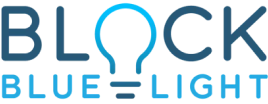We Have Done Our Research
We Have Done Our Research
We have immersed ourselves in all the academic research so we fully understand this topic and we can proudly call ourselves true experts in all things to do with blue and artificial light mitigation.
We ensure all of our products are evidence based, and align with the academic research to make them are the most optimal available. Our products have full transparency on all of the light filtering specifications so you can see exactly what wavelengths of light are being blocked and filtered.
Don't just take our word for it, on this page we have compiled a growing collection of some of the top independent scientific studies from all over the world, so you can learn more about the issues with blue and artificial light exposure and the science behind why all of our products work, and why we have developed them to very precise specifications.
We also write our own articles based on a lot of the research below plus many more sources, we put the content into much easier to understand format for the average person, you can read all our articles on light, health, and sleep on the BlockBlueLight Blog.


